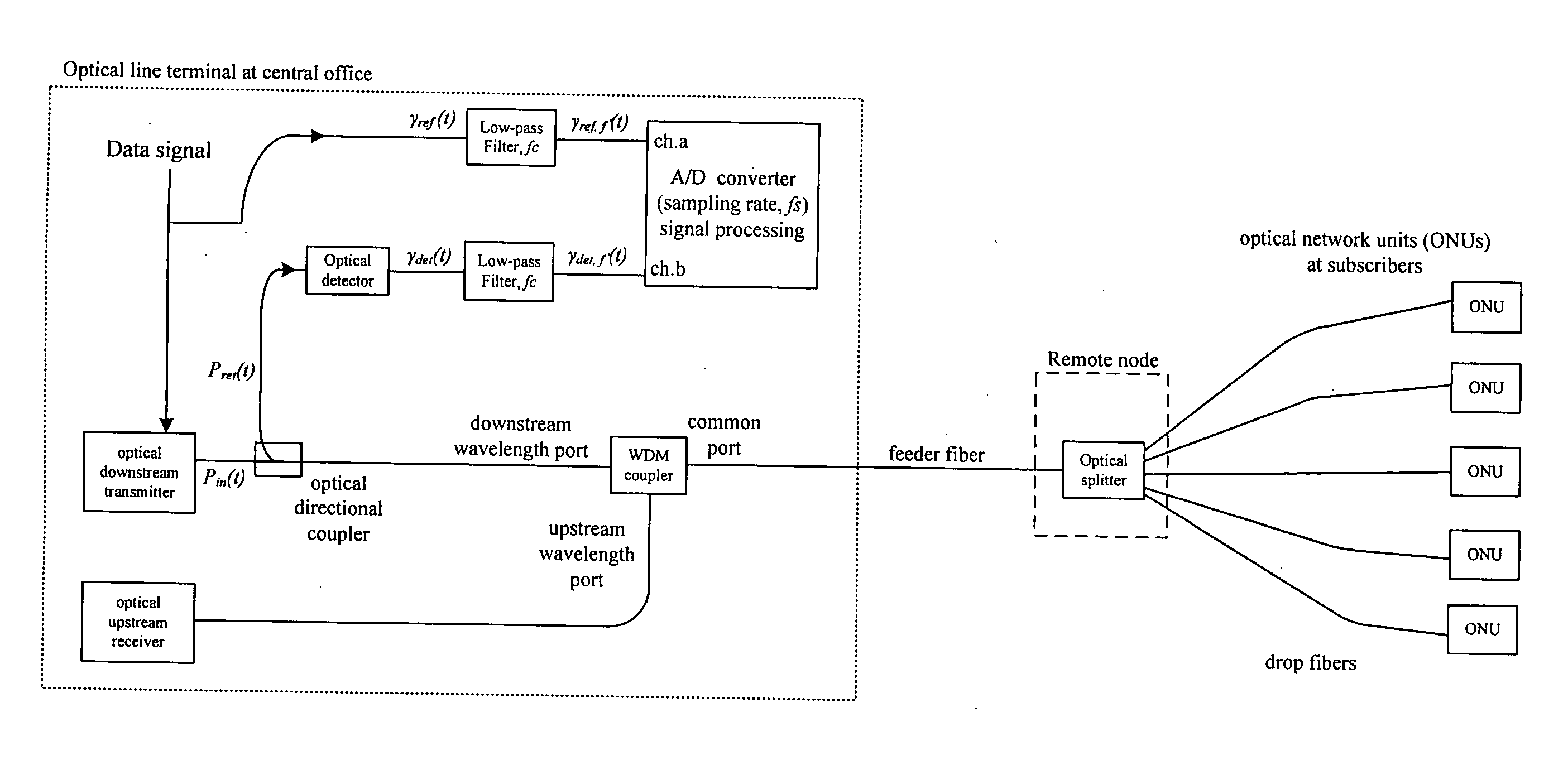Monitoring of optical transmission systems based on cross-correlation operation
a technology of optical transmission system and cross-correlation operation, which is applied in the direction of transmission monitoring, transmission monitoring/testing/fault-measurement system, transmission monitoring, etc., can solve the problems of limited dynamic range, severe distortion of transmitted and back-reflected signals, and waveforms that become gaussian-noise-lik
- Summary
- Abstract
- Description
- Claims
- Application Information
AI Technical Summary
Benefits of technology
Problems solved by technology
Method used
Image
Examples
first example
[0036]FIG. 4 shows the experimental setup 290, in which the present invention is applied to fiber-optic transmission links in service. A distributed-feedback (DFB) laser diode 200 operating at 1550.6 nm was used as an optical transmitter and is directly modulated with 1.25-Gb / s non-return-to-zero (NRZ) data using a pulse pattern generator 210 in order to demonstrate the system in service. The signal light was launched into a fiber 220 through an optical circulator 230. The average input power launched into the fiber was 0.8 dBm. To detect the back-reflected light, a conventional avalanche photo diode (APD) 240 was used, which was designed for a 155 Mb / s synchronous digital hierarchy (SDH) receiver. The data and the detected electric signals were respectively filtered out by 3-MHz LPFs 254 and 252, and digitized by a 9-bit A / D converter 260 at a sampling rate of 10 Msamples / s. Then, their cross-correlation was calculated by using a personal computer 270. In this experiment, the spati...
second example
[0039]FIG. 6 shows the experimental setup used to demonstrate the in-service monitoring of the present invention in a WDM PON system. The system under test consisted of the central office 600 which includes Optical Line Terminals (OLTs) 285 and an AWG#1610, 10.0-km long feeder fiber 620, the remote node that consists of an AWG#2630, and drop fibers 640. Optical network unit (ONU) 650 was attached to the end of each drop fiber 640. The insertion loss of each AWG was about 4.1 dB and the fibers had a propagation loss of 0.21 dB / km. The AWGs were 8-ch 200-GHz spacing arrayed-waveguide gratings. Each OLT 285 used in this example was the same as the experimental setup of the first example except for the fiber 220.
[0040]FIG. 7 shows the results of the measurement obtained in the second example, more particularly, (a) of FIG. 7 shows the cross-correlation trace measured without averaging. The discrete reflections at the central office 600 (especially at AWG#1610), the remote node (AWG#2630...
third example
[0041]FIG. 8 shows the implementation of the present invention to a PON system. The downstream signal from the optical line terminal (OLT) is distributed to the subscribers through the optical splitter at the remote node. Therefore, by applying the present invention to the PON system, the simultaneous monitoring of drop fiber cables is possible.
PUM
 Login to View More
Login to View More Abstract
Description
Claims
Application Information
 Login to View More
Login to View More - R&D
- Intellectual Property
- Life Sciences
- Materials
- Tech Scout
- Unparalleled Data Quality
- Higher Quality Content
- 60% Fewer Hallucinations
Browse by: Latest US Patents, China's latest patents, Technical Efficacy Thesaurus, Application Domain, Technology Topic, Popular Technical Reports.
© 2025 PatSnap. All rights reserved.Legal|Privacy policy|Modern Slavery Act Transparency Statement|Sitemap|About US| Contact US: help@patsnap.com



